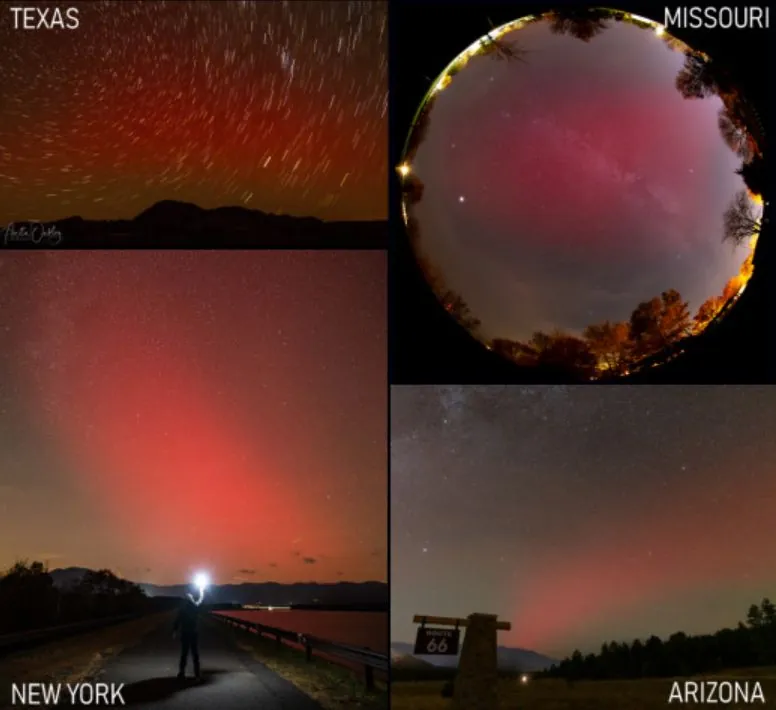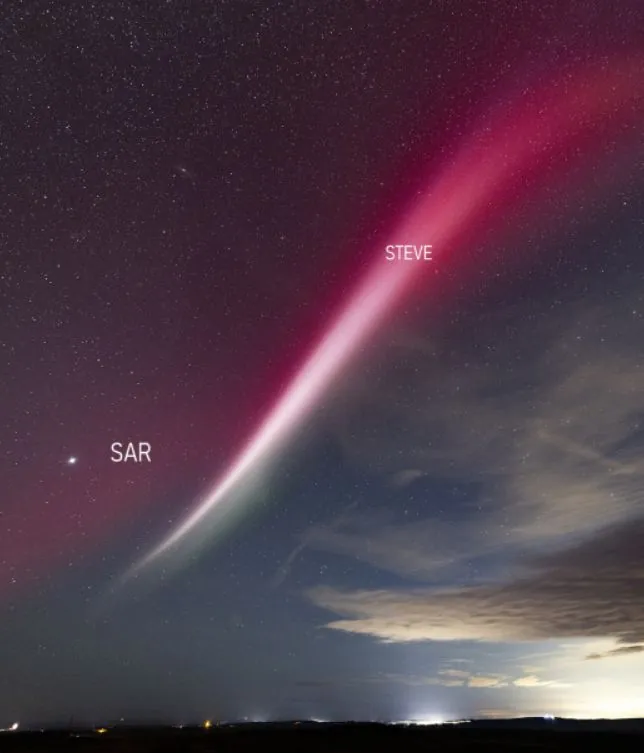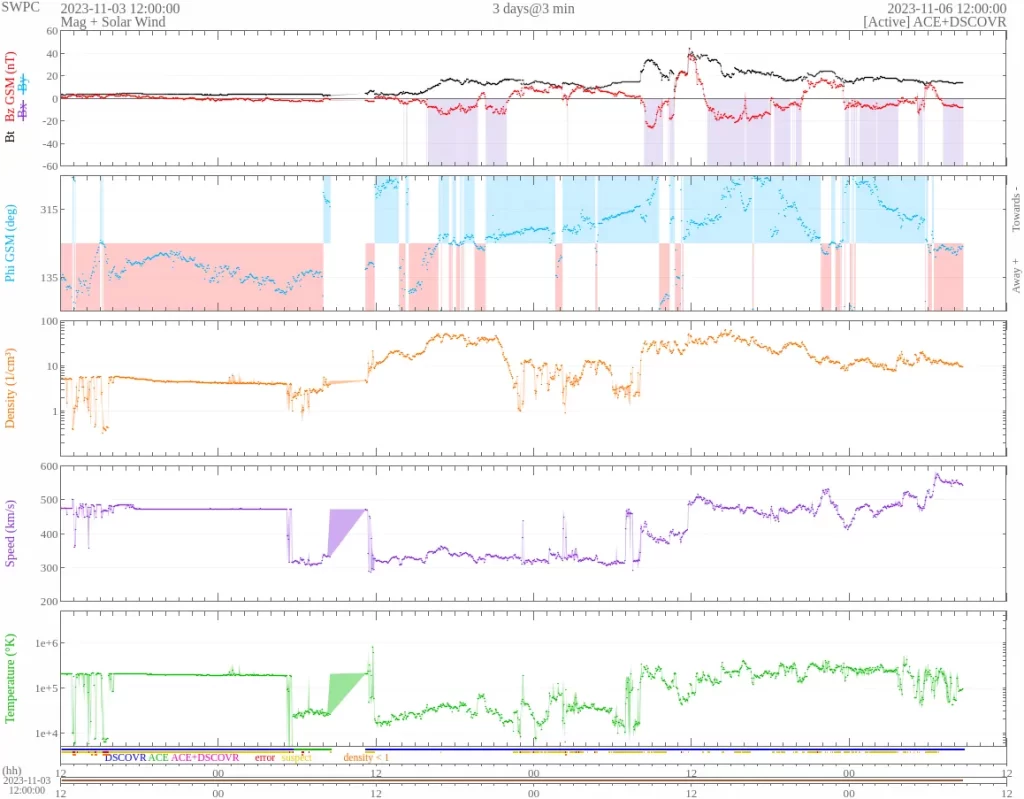On November 5, 2023, observers across the globe were treated to a striking light show, courtesy of a G3 – Strong geomagnetic storm. This solar event was powerful enough to push the typically high-latitude auroras into lower latitudes, with sightings as far south as Texas and Arizona in the United States, as well as in European countries like Italy and Greece. Sightings were also reported in Australia and New Zealand.
Initial reports suggested these lights were auroras, but a closer examination revealed a different story. The red glows captured in images were identified as “SAR arcs,” a term dating back to their discovery in 1956. Dr. Tony Philipps of SpaceWeather.com highlighted this misnomer, emphasizing that SAR arcs are neither stable nor true auroras.
Unlike auroras, which are created by charged particles from space interacting with the Earth’s atmosphere, SAR arcs originate from a different process. They signal the presence of heat energy escaping into the upper atmosphere from the Earth’s ring current system. This system, shaped like a doughnut, encircles our planet, carrying a current measured in millions of amperes.
The recent geomagnetic storm energized the ring current, leading to the widespread appearance of SAR arcs. Jeff Baumgardner from the Center for Space Physics at Boston University noted that the event was truly global, with their equipment detecting SAR arc activity stretching from Italy to New Zealand.

SAR arcs have an unexpected link to another phenomenon known as STEVE (Strong Thermal Emission Velocity Enhancement), which, like SAR arcs, is not an aurora.
In a notable observation from 2015, a red SAR arc in New Zealand was seen transforming into STEVE, suggesting a metamorphosis similar to a caterpillar becoming a butterfly. This transformation was seemingly echoed on November 5 over Northumberland, UK, when Mark Savage observed STEVE emerge from a SAR arc in a matter of minutes, a timeline consistent with another observed transition in Canada in April 2022.
While the connection between SAR arcs and STEVE is evident, the exact nature of their relationship remains elusive. Carlos Martinis, a leading researcher at Boston University, conveys that sometimes SAR arcs develop into STEVE, but not invariably. This active area of research benefits from the participation of both citizen scientists and professional researchers, contributing to a growing understanding of these fascinating atmospheric phenomena.


The G3 – Strong geomagnetic storm that occurred on Sunday, November 5, 2023, was the result of a one-two punch from two coronal mass ejections (CMEs) that had left the Sun on November 2 and 3.
The initial CME set the stage, but it was the compounded effect of the two that led to the geomagnetic storm classified as G3, indicating strong effects that can have impacts on satellite operations, power grids, and navigation systems on Earth.
The early indications of the storm’s potential were evident when solar wind enhancement was first detected at 08:10 UTC on November 5, with instruments measuring a substantial rise in the solar wind’s total field strength to 34 nT. The significant southward deflection of the magnetic field, or the Bz component, dipped to -27 nT, signaling a strong interaction was underway.
Though this initial phase did not exhibit extremely high velocities, peaking at 434 km/s, the conditions were set for a more intense second shock.
This subsequent jolt, arriving at 11:46 UTC, brought a notable increase in total field strength to 45 nT. Over the following hours, the Bz component remained strongly negative, fluctuating between -15 and -20 nT, indicative of a robust geomagnetic disturbance. The solar wind speed surged to 517 km/s, then settled into a faster-than-average stream of 460 – 480 km/s, sustaining the storm conditions and facilitating the remarkable global display of SAR arcs and the potential observation of the SAR to STEVE transformation.


References:
1 Earth’s ring current just sprang a leak – SpaceWeather – November 7, 2023
2 Geomagnetic storm reaches G3 – Strong level after dual CME impact – The Watchers – November 6, 2023
Featured image credit: SpaceWeather.com
If you value what we do here, create your ad-free account and support our journalism.
High risk of eruption near Grindavík: 15-km long magma intrusion identified northwest of town, Iceland
Saturday, November 11, 2023
Geomagnetic storm reaches G3 – Strong level after dual CME impact
Monday, November 6, 2023
Large filament eruption produces partial-halo CME, impact to Earth expected on November 5
Saturday, November 4, 2023
Storm Ciarán hits Western Europe with record-breaking winds, causing deaths and widespread damage
Friday, November 3, 2023
Revised NOAA forecast predicts stronger Solar Cycle 25, peak in 2024
Friday, October 27, 2023
Extremely dangerous Category 5 Hurricane “Otis” makes unexpected landfall near Acapulco, Mexico — at least 46 fatalities, 58 missing
Wednesday, October 25, 2023
Red Alert in Vanuatu, Lola becomes southern hemisphere’s earliest Category 5 tropical cyclone on record
Tuesday, October 24, 2023